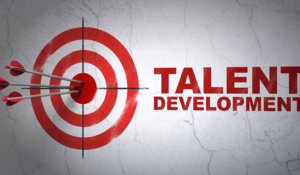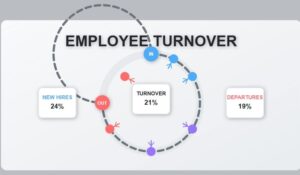In today’s fast-paced business environment, organizations are constantly seeking ways to improve their workforce. One of the most effective strategies is talent development. But what exactly is talent development, and why does it matter? This article will delve into the intricacies of talent development, its advantages, and how it differs from talent management. Additionally, we will explore various types of talent development programs and the essential steps to initiate a successful program.
Understanding Talent Development
Talent development stands at the heart of organizational success in today’s competitive landscape. Furthermore, this strategic approach focuses on nurturing employee skills and capabilities to drive both individual and company growth. Additionally, talent development encompasses structured programs designed to enhance workforce capabilities systematically.
What is talent development, exactly? In essence, talent development refers to the process of identifying, cultivating, and retaining skilled employees within an organization. Moreover, talent development creates pathways for professional advancement while addressing critical skill gaps. Consequently, companies that invest in talent development often see improved performance metrics across departments.
Talent Development vs. Talent Management
It’s essential to distinguish between talent development and talent management. While they are related, they serve different purposes:
-
Talent Management: This encompasses the entire process of attracting, hiring, and retaining employees. It’s a broad strategy to ensure the right people are in the right roles.
-
Talent Development: This focuses specifically on nurturing and enhancing employees’ skills and potential. It’s about growth and learning within the organization.
Understanding these differences is crucial for implementing effective strategies.
Distinct Goals of Talent Management
Talent management focuses on attracting, retaining, and optimizing the workforce. Its primary goal is to ensure that the right people are in the right roles. In contrast, talent development is more about nurturing and enhancing the skills of existing employees. This distinction is vital because an organization that excels in talent management may still struggle if it does not invest in the continuous development of its workforce. By aligning talent management practices with development initiatives, companies can create a more resilient and adaptable workforce capable of meeting evolving business challenges.
Strategic vs. Specific Approaches
Talent management takes a broader, strategic approach, often involving workforce planning and succession planning. Talent development, on the other hand, is more specific and focuses on individual employee growth through targeted training and development initiatives. This strategic alignment ensures that while the organization is preparing for future needs, it is also equipping its employees with the necessary skills to thrive in their current roles. By integrating both approaches, organizations can foster a culture of continuous improvement and agility, where employees feel valued and motivated to contribute to the company’s long-term success.
Personalized Development for Employees
Talent development emphasizes personalized learning paths tailored to individual needs. This approach recognizes that each employee has unique strengths and areas for improvement, allowing for a more effective development process. By utilizing tools such as assessments and feedback mechanisms, organizations can identify specific skill gaps and create customized development plans. This not only enhances employee engagement but also drives performance, as individuals are more likely to invest in their growth when they see a clear path forward that aligns with their career aspirations.
Comprehensive Learning Beyond Training
While training is a component of talent development, it goes beyond mere instruction. It includes mentorship, coaching, and experiential learning opportunities that foster a holistic approach to employee growth. For instance, organizations may implement job rotation programs, allowing employees to gain diverse experiences across different departments. This not only broadens their skill sets but also enhances collaboration and understanding of the organization’s overall goals. Additionally, fostering a culture of knowledge sharing and peer learning can significantly enrich the talent development process, creating an environment where continuous learning is valued and encouraged.
The Importance of Talent Development in the Workplace
Talent development is not just a nice-to-have; it is essential for organizational success. Companies that prioritize talent development are more likely to experience higher employee retention rates, increased productivity, and improved overall performance.
Moreover, in an era where the workforce is constantly evolving, organizations must adapt to stay competitive. Implementing a strong talent development strategy ensures that employees are equipped with the skills needed to meet future challenges. This proactive approach can significantly impact the organization’s ability to innovate and grow.
In addition to enhancing individual skills, talent development fosters a culture of continuous learning and improvement within the organization. When employees see that their employer is invested in their growth, they are more likely to feel valued and engaged in their work. This sense of belonging can lead to improved morale and collaboration among team members, creating a more cohesive work environment. Furthermore, organizations that encourage ongoing education and training often find that their employees are more adaptable and open to change, which is crucial in today’s fast-paced business landscape.
Furthermore, talent development can serve as a powerful tool for succession planning. By identifying and nurturing high-potential employees, organizations can ensure a smooth transition when leadership roles become available. This strategic foresight not only mitigates the risk of disruption but also cultivates a pipeline of future leaders who are already aligned with the company’s values and goals. As a result, investing in talent development not only benefits the individual employee but also strengthens the organization as a whole, preparing it for long-term success in an ever-changing market.
Exploring Talent Development Program Types
There are various types of talent development programs that organizations can implement. Each type serves a different purpose and can be tailored to meet specific needs.
Mentoring and Coaching
Mentoring and coaching programs pair employees with experienced professionals who can provide guidance and support. This one-on-one interaction helps individuals navigate their career paths and develop essential skills. Mentors often share their own experiences, offering insights that can help mentees avoid common pitfalls and seize opportunities. Additionally, these relationships can foster a culture of continuous learning and knowledge sharing within the organization, as mentors encourage mentees to pass on what they have learned to others.
Sponsorship Opportunities
Sponsorship involves advocating for employees to help them advance in their careers. This can include introducing them to key stakeholders or providing opportunities for visibility within the organization. Unlike traditional mentoring, sponsorship is more focused on actively promoting the employee’s work and potential to upper management. This dynamic can significantly enhance an employee’s career trajectory, as sponsors leverage their influence to create pathways for advancement that might not be accessible otherwise.
Cross-Training Benefits
Cross-training allows employees to learn different roles within the organization. This not only enhances their skill set but also fosters collaboration and teamwork, leading to a more versatile workforce. Employees who engage in cross-training often develop a deeper understanding of the organization’s operations, which can lead to improved problem-solving and innovation. Furthermore, this practice can help mitigate risks associated with staff turnover, as a more skilled and adaptable workforce can fill gaps more easily when needed.
Microlearning Techniques
Microlearning involves delivering content in small, easily digestible segments. This approach caters to the modern learner’s preference for quick, focused learning experiences, making it an effective tool in talent development. By breaking down complex topics into bite-sized modules, organizations can increase retention and engagement. Additionally, microlearning can be easily integrated into daily workflows, allowing employees to learn at their own pace and on their own schedule, which can lead to a more motivated and self-directed workforce.
Interactive Workshops
Workshops provide hands-on learning experiences that encourage participation and engagement. These sessions can cover a variety of topics, from soft skills to technical training, and often result in immediate application of knowledge. The interactive nature of workshops helps to create a dynamic learning environment where employees can collaborate, share ideas, and learn from one another. Moreover, incorporating real-life scenarios and role-playing exercises can enhance the learning experience, making it more relevant and memorable for participants.
Formal Courses and Certifications
Offering formal courses and certifications can enhance employees’ qualifications and expertise. These programs often provide recognized credentials that can boost career advancement opportunities. Additionally, formal education can instill a sense of accomplishment and confidence in employees, motivating them to pursue further development. Organizations that invest in formal training programs not only improve their workforce’s skills but also demonstrate their commitment to employee growth, which can enhance retention and job satisfaction.
Apprenticeship Programs
Apprenticeships combine on-the-job training with classroom instruction, allowing employees to gain practical experience while learning. This method is particularly effective in skilled trades and technical fields. Apprenticeships not only equip employees with the necessary skills but also help them build professional networks within their industry. Furthermore, organizations that offer apprenticeship programs can benefit from a more skilled workforce, as apprentices often bring fresh perspectives and innovative ideas to their roles.
Project-Based Learning Initiatives
Project-based learning allows employees to work on real-world projects that align with their interests and career goals. This hands-on approach not only enhances skills but also fosters innovation and creativity. By engaging in projects that have tangible outcomes, employees can see the direct impact of their contributions, which can be incredibly motivating. Additionally, project-based learning encourages collaboration across departments, breaking down silos and promoting a culture of teamwork and shared success.
Steps to Initiate a Talent Development Program
Starting a talent development program requires careful planning and execution. Here are some essential steps to consider:
Establish Clear Company Objectives
Before launching a talent development program, it is crucial to define clear objectives. What skills need to be developed? What outcomes are expected? Aligning the program with the organization’s overall goals will ensure its effectiveness. For instance, if a company is looking to enhance its digital marketing capabilities, the program should focus on relevant skills such as SEO, content creation, and data analytics. By setting specific, measurable goals, organizations can track progress and make necessary adjustments to the program as it evolves.
Gain Stakeholder Engagement
Engaging stakeholders is vital for the success of any talent development initiative. This includes leadership, HR, and employees themselves. By involving key players in the planning process, organizations can foster a sense of ownership and commitment to the program. Additionally, conducting surveys or focus groups can provide valuable insights into the specific needs and preferences of employees, ensuring that the program is tailored to address their aspirations and career goals. This collaborative approach not only enhances buy-in but also helps in building a culture of continuous learning and development within the organization.
Furthermore, it is essential to communicate the benefits of the talent development program clearly. Highlighting how it can lead to career advancement opportunities, skill enhancement, and increased job satisfaction can motivate employees to actively participate. Regular updates and feedback loops can also keep the momentum going, making it easier to adapt the program based on participant experiences and outcomes. This ongoing dialogue reinforces the organization’s commitment to employee growth and can significantly improve retention rates.
In conclusion, talent development is a powerful strategy that can transform an organization. By understanding its importance and implementing effective programs, companies can cultivate a skilled and motivated workforce ready to face the challenges of tomorrow. With platforms like HubEngage, organizations can streamline communication and engagement, ensuring that talent development initiatives are effectively communicated and received. Utilizing various channels such as mobile apps, web platforms, and digital signage can further enhance the reach and impact of these programs.
Implementation Challenges and Solutions
Despite its importance, implementing talent development initiatives comes with obstacles. Frequently, organizations struggle with limited resources and competing priorities. Nevertheless, phased implementation approaches can help overcome budget constraints. Meanwhile, securing leadership buy-in remains essential for sustained success.
Common implementation challenges include:
- Inconsistent execution across departments
- Difficulty measuring ROI
- Resistance to new development methodologies
- Limited technology infrastructure
- Insufficient manager preparation
To address these challenges, organizations should:
- Start with pilot programs in receptive departments
- Establish clear metrics tied to business outcomes
- Provide manager training on development coaching
- Utilize scalable technology solutions
- Create accountability mechanisms for all stakeholders
The Role of Technology in Modern Talent Development
Technology has revolutionized talent development approaches. Particularly, learning management systems now offer personalized experiences at scale. Moreover, analytics tools provide insights into skill gaps and development progress. Additionally, mobile learning platforms enable on-demand access to training materials.
According to LinkedIn’s Workplace Learning Report, 57% of talent developers spend more time on online learning than in previous years. Furthermore, microlearning formats have gained popularity for their effectiveness and convenience. Meanwhile, AI-powered recommendations help employees discover relevant learning opportunities.
Advanced technology solutions enable:
- Real-time performance support
- Social learning communities
- Gamified learning experiences
- Skills analytics dashboards
- Virtual reality training simulations
Measuring the Impact of Talent Development Initiatives
Quantifying the return on talent development investments remains crucial. Specifically, organizations should track both leading and lagging indicators. Additionally, balanced scorecards help maintain focus on both short and long-term objectives. Meanwhile, employee surveys provide valuable qualitative insights about program effectiveness.
Key performance indicators might include:
- Promotion rates from within
- Reduction in critical skill gaps
- Employee satisfaction scores
- Time-to-proficiency metrics
- Revenue per employee
A McKinsey study found that organizations with effective talent development programs experience 30-50% higher engagement levels. Furthermore, this translates to approximately 20-25% lower turnover rates. Consequently, the financial impact becomes significant when considering replacement costs.
Why HubEngage Excels in Talent Development Implementation
HubEngage offers a comprehensive platform specifically designed to support robust talent development initiatives. Particularly, its integrated approach combines learning management with engagement tools. Additionally, the platform provides analytics capabilities that measure program effectiveness. Therefore, organizations gain valuable insights while maintaining user-friendly experiences.
The HubEngage platform stands out for several reasons:
- Seamless integration with existing HR systems
- Customizable development pathways
- Mobile-first design for on-the-go learning
- Built-in recognition features that reinforce development
- Multilingual support for global teams
According to internal research, organizations using HubEngage for talent development report 34% higher completion rates for learning programs. Furthermore, employee satisfaction scores typically increase by 27% within six months of implementation. Meanwhile, manager-employee development conversations become more frequent and productive.
Case Studies: Organizations Transforming Through Talent Development
Several organizations have achieved remarkable results through strategic talent development initiatives. For instance, a global manufacturing company reduced turnover by 28% after implementing a structured career pathing program. Additionally, they saved approximately $3.2 million in replacement costs annually. Meanwhile, employee engagement scores rose by 23 percentage points.
A professional services firm transformed its approach to talent development by creating specialist and management tracks. Subsequently, they experienced a 41% increase in internal promotions. Furthermore, time-to-fill for senior positions decreased by 34%. Consequently, both business continuity and employee satisfaction improved significantly.
These success stories share common elements:
- Clear alignment with business strategy
- Strong executive sponsorship
- Regular measurement and adjustment
- Emphasis on both technical and soft skills
- Technology enablement for scale and consistency
Creating a Talent Development Culture
Sustainable talent development requires more than programs—it demands cultural transformation. Specifically, organizations must value continuous learning at all levels. Moreover, leaders should model development behaviors themselves. Additionally, reward systems should recognize growth and skill acquisition. Therefore, a self-reinforcing cycle of development emerges.
According to Harvard Business Review, organizations with strong learning cultures experience 30-50% higher retention rates among high performers. Furthermore, these cultures foster innovation and adaptability. Meanwhile, employees report higher job satisfaction and sense of purpose.
Steps to build a development culture include:
- Incorporating learning objectives into performance reviews
- Celebrating development milestones publicly
- Allocating protected time for learning activities
- Encouraging knowledge sharing across teams
- Recognizing managers who excel at developing their teams.
Future Trends in Talent Development
The talent development landscape continues to evolve rapidly. Particularly, skills-based approaches are replacing traditional role-based models. Additionally, just-in-time learning delivers content at the moment of need. Meanwhile, internal talent marketplaces connect employees with growth opportunities across organizations.
According to Gartner research, 58% of the workforce will need new skills to do their jobs successfully. Furthermore, the half-life of skills continues to shrink across industries. Therefore, organizations must build systems for continuous reskilling and upskilling.
Emerging trends include:
- Increased focus on human skills alongside technical capabilities
- Greater emphasis on self-directed learning journeys
- Rise of learning ecosystems beyond traditional LMS platforms
- Integration of performance support into workflow
- Adoption of skills ontologies for precise development targeting
Implementing Talent Development with HubEngage
HubEngage provides a comprehensive platform for implementing robust talent development strategies. Specifically, its modular approach allows organizations to start small and scale gradually. Additionally, the intuitive interface requires minimal training for administrators and users. Therefore, organizations can quickly launch impactful initiatives.
The implementation process typically follows these steps:
- Needs assessment and strategy alignment
- Platform configuration and content curation
- Manager and employee onboarding
- Pilot program launch and refinement
- Enterprise-wide rollout with ongoing support
HubEngage’s customer success team partners with organizations throughout implementation. Furthermore, they provide best practices guidance based on industry experience. Meanwhile, technical support ensures smooth operation of all platform features.
Summing Up: The Competitive Advantage of Talent Development
In today’s knowledge economy, talent development represents a critical competitive advantage. Organizations that excel in developing their people consistently outperform competitors. Furthermore, effective talent development strategies create more adaptable, engaged workforces. Therefore, investing in systematic development approaches yields substantial returns.
The distinction between talent management and talent development highlights the importance of both strategic and operational approaches to human capital. While talent management provides the framework, talent development delivers the momentum for organizational growth. Together, they create sustainable capability building.
As organizations navigate uncertain business environments, talent development provides stability through capability building. With platforms like HubEngage, implementing comprehensive development strategies becomes more accessible and effective. The organizations that prioritize talent development today will likely lead their industries tomorrow.
For more information on implementing effective talent development strategies with HubEngage, contact our team today.














